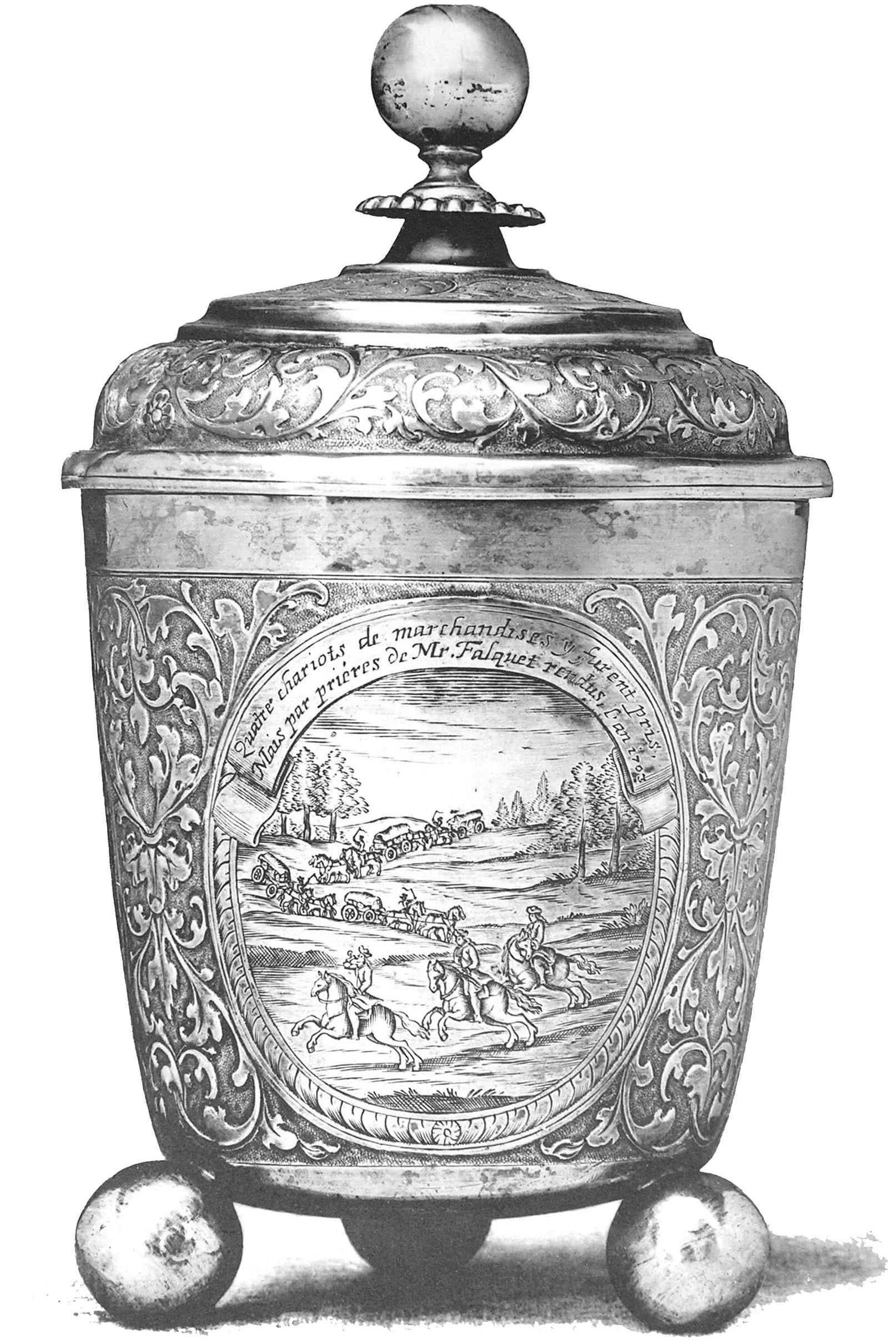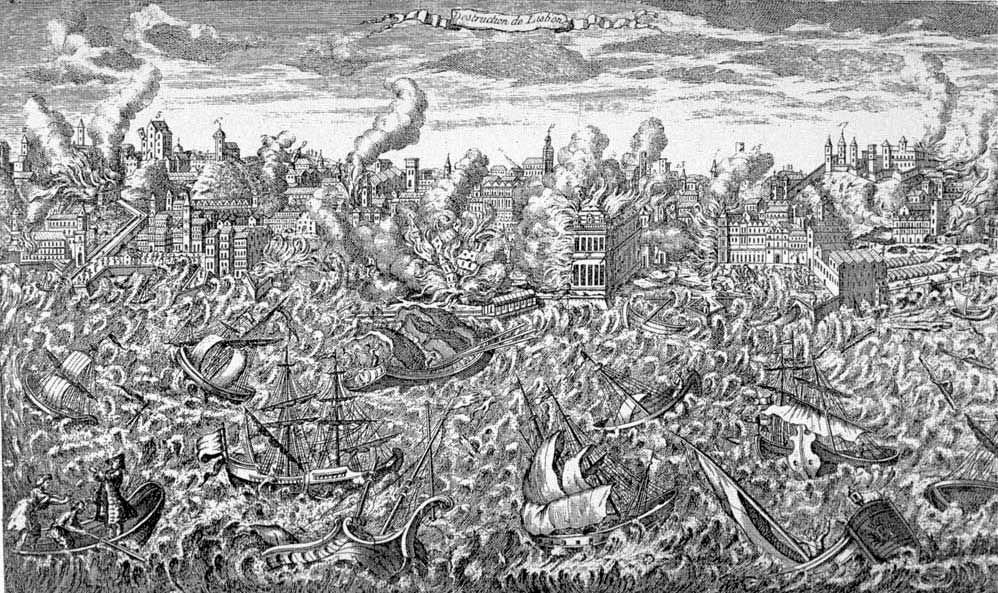|
André Falquet
André Falquet (* February 11, 1681 in Geneva;Entrée pour André Falquet dans le registre de la paroisse protestante de Saint-Pierre avec l'Auditoire: 1) Baptêmes du 1er janvier 1678 au 14 avril 1699. Archive de l'Etat de Genève, «CH AEG E.C. Saint-Pierre B.M. 10», :File:BM St Pierre 1681 - André Falquet.jpg, Photo of the record. † January 28, 1755 ibid) was a Geneva merchant and trader, and a member of the Council of Two Hundred. Life Falquet's paternal ancestors came from Pouilly (Contamine-sur-Arve). His great-great-grandfather Aymé Falquet was a vinegar manufacturer there. André Falquet's great-grandfather eventually acquired a property in Geneva. Falquet's father Pierre was a jeweler. André Falqet was baptized on Monday, February 14, 1681, in Saint-Pierre Cathedral by Charles Dufour. The godfather was André Rousseau, the brother of David Rousseau, Jean-Jacques Rousseau, Jean-Jacques' grandfather. Falquet worked in his father's business (jewelry trade) from t ... [...More Info...] [...Related Items...] OR: [Wikipedia] [Google] [Baidu] |
Gobelet André Falquet
The Gobelet André Falquet is a silver-gilt cup with cover made in the 18th century by Hans-Matthias Rehm of Augsburg for the Swiss merchant André Falquet, which is kept in the Maison Tavel (''Musées d'Art et d'Histoire Genève'') in Geneva under inventory number G 834. In French it is a ''gobelet''; the English derivative goblet now implies a cup with a stemware, stem (like most chalices or wineglasses). Description The diameter at the top is 12 centimetres, and the cup stands on three soldered balls that raise the cup by about two centimetres. The outside of the cup is decorated with engravings. These are beautifully drawn and elaborate arabesque ornaments. Three oval medallions show different subjects and are captioned to the story below. Further text and two coats of arms are found on the underside of the cup; they are those of André Falquet and the city of Augsburg. A lid completes the piece. It consists of an undecorated closing rim and a quarter-round decorated rim ... [...More Info...] [...Related Items...] OR: [Wikipedia] [Google] [Baidu] |
18th-century Businesspeople From The Republic Of Geneva
The 18th century lasted from 1 January 1701 (represented by the Roman numerals MDCCI) to 31 December 1800 (MDCCC). During the 18th century, elements of Enlightenment thinking culminated in the Atlantic Revolutions. Revolutions began to challenge the legitimacy of monarchical and aristocratic power structures. The Industrial Revolution began mid-century, leading to radical changes in human society and the environment. The European colonization of the Americas and other parts of the world intensified and associated mass migrations of people grew in size as part of the Age of Sail. During the century, slave trading expanded across the shores of the Atlantic Ocean, while declining in Russia and China. Western historians have occasionally defined the 18th century otherwise for the purposes of their work. For example, the "short" 18th century may be defined as 1715–1789, denoting the period of time between the death of Louis XIV of France and the start of the French Revolution, ... [...More Info...] [...Related Items...] OR: [Wikipedia] [Google] [Baidu] |
18th-century Politicians From The Republic Of Geneva
The 18th century lasted from 1 January 1701 (represented by the Roman numerals MDCCI) to 31 December 1800 (MDCCC). During the 18th century, elements of Enlightenment thinking culminated in the Atlantic Revolutions. Revolutions began to challenge the legitimacy of monarchical and aristocratic power structures. The Industrial Revolution began mid-century, leading to radical changes in human society and the environment. The European colonization of the Americas and other parts of the world intensified and associated mass migrations of people grew in size as part of the Age of Sail. During the century, slave trading expanded across the shores of the Atlantic Ocean, while declining in Russia and China. Western historians have occasionally defined the 18th century otherwise for the purposes of their work. For example, the "short" 18th century may be defined as 1715–1789, denoting the period of time between the death of Louis XIV of France and the start of the French Revolutio ... [...More Info...] [...Related Items...] OR: [Wikipedia] [Google] [Baidu] |
1755 Deaths
Events January–March * January 23 (O. S. January 12, Tatiana Day, nowadays celebrated on January 25) – Moscow University is established. * February 13 – Treaty of Giyanti: The kingdom of Mataram on Java is divided in two, creating the sultanate of Yogyakarta and the sunanate of Surakarta. * March 12 – A steam engine is used in the American colonies for the first time as New Jersey copper mine owner Arent Schuyler installs a Newcomen atmospheric engine to pump water out of a mineshaft. * March 22 – Britain's House of Commons votes in favor of £1,000,000 of appropriations to expand the British Army and Royal Navy operations in North America. * March 26 – General Edward Braddock and 1,600 British sailors and soldiers arrive at Alexandria, Virginia on transport ships that have sailed up the Potomac River. Braddock, sent to take command of the British forces against the French in North America, commandeers taverns and private homes to ... [...More Info...] [...Related Items...] OR: [Wikipedia] [Google] [Baidu] |
1681 Births
Events January–March * January 1 – Prince Muhammad Akbar, son of the Mughal Emperor Aurangzeb, initiates a civil war in India. With the support of troops from the Rajput states, Akbar declares himself the new Mughal Emperor and prepares to fight his father, but is ultimately defeated. * January 3 – The Treaty of Bakhchisarai is signed, between the Ottoman vassal Crimean Khanate and the Russian Empire. * January 18 – The "Exclusion Bill Parliament", summoned by King Charles II of England in October, is dissolved after three months, with directions that new elections be held, and that a new parliament be convened in March in Oxford. * February 2 – In India, the Mughal Empire city of Burhanpur (now in the Indian state of Madhya Pradesh) is sacked and looted by troops of the Maratha Empire on orders of the Maratha emperor, the Chhatrapati Sambhaji. General Hambirrao Mohite began the pillaging three days earlier. * March 4 – In order ... [...More Info...] [...Related Items...] OR: [Wikipedia] [Google] [Baidu] |
Jean-Louis Falquet
Jean-Louis Falquet (19 November 1768 in Geneva – 6 November 1842 in Geneva) was a Genevan politician and banquier. Life Business career Together with four other limited partners, he founded the bank ''De Candolle Mallet & Cie'' in Geneva on 23 July 1805, the day on which the partnership's deed of incorporation was signed. Today, the bank is known as the Pictet Group. Military Career Falquet was an officer in the French army, which is why he was "banished for life in absentia", (bannis à perpétuité par contumace) in the First Geneva Revolutionary Court (Le premier tribunal révolutionnaire Genevois) in the summer of 1794. Political career Falquet was a member of the Geneva government during and after the Restoration: * 1813 Member of the Provisional Council (one of 22) that restored the Republic of Geneva on 31 December 1813 * 1814 Clerk of State * 1815 Member of the Council of State (''Conseil de l'État'') and sole State Clerk * 1816 Second Clerk of State.As he wa ... [...More Info...] [...Related Items...] OR: [Wikipedia] [Google] [Baidu] |
Friedrich Karl Von Schönborn
Friedrich Karl von Schönborn (or Friedrich Carl, 1674–1746) was the Prince-Bishop of Würzburg and Prince-Bishop of Bamberg from 1729 to 1746. He also served as ''Reichsvizekanzler'' (Vice-Chancellor) of the Holy Roman Empire from 1705 to 1734. Biography Friedrich Karl (or Carl) von Schönborn was born in Mainz on 3 March 1674, the second son of (1644-1717, see List of rulers of Schönborn) and his wife, Maria Anna Sophia von Boineburg (1652–1726). Friedrich Karl was the nephew of Lothar Franz von Schönborn, Archbishop-Elector of Mainz. Friedrich Karl's older brother Johann Philipp Franz von Schönborn was one of his predecessors as Prince-Bishop of Würzburg; his younger brother Damian Hugo Philipp von Schönborn became Prince-Bishop of Speyer and his youngest brother Franz Georg von Schönborn became Archbishop-Elector of Trier. In 1681, he was sent to study at the Jesuit school at Aschaffenburg. He became a ''Canon (Priest)'' at Würzburg in 1683 and at Bamber ... [...More Info...] [...Related Items...] OR: [Wikipedia] [Google] [Baidu] |
Letters Of Nobility
The patent of nobility, also letters of nobility (always ), or diploma of nobility documented the legal act of ennoblement (granting rights of a nobleman to a "new man" and his family). The ennoblement was an event of ultimate importance in a feudal society. The preparation of diploma of nobility was usually done at the expense of a future noble, so his wealth and sense of aesthetics influenced the grandeur and appearance of the document. The patent was kept in the family archives, and practicality dictated registering it in the central archive, with the seal applied. The patents were created as an instrument of a central power to be used against the landed hereditary aristocracy. The first European patent was issued by Philip III of France in the early 1270s to a commoner silversmith. While the rules for granting the patents were established by the son of Philip III, Philip IV of France, these were "far from irreversible", and the clear picture of French nobility as the men eit ... [...More Info...] [...Related Items...] OR: [Wikipedia] [Google] [Baidu] |
Latin
Latin ( or ) is a classical language belonging to the Italic languages, Italic branch of the Indo-European languages. Latin was originally spoken by the Latins (Italic tribe), Latins in Latium (now known as Lazio), the lower Tiber area around Rome, Italy. Through the expansion of the Roman Republic, it became the dominant language in the Italian Peninsula and subsequently throughout the Roman Empire. It has greatly influenced many languages, Latin influence in English, including English, having contributed List of Latin words with English derivatives, many words to the English lexicon, particularly after the Christianity in Anglo-Saxon England, Christianization of the Anglo-Saxons and the Norman Conquest. Latin Root (linguistics), roots appear frequently in the technical vocabulary used by fields such as theology, List of Latin and Greek words commonly used in systematic names, the sciences, List of medical roots, suffixes and prefixes, medicine, and List of Latin legal terms ... [...More Info...] [...Related Items...] OR: [Wikipedia] [Google] [Baidu] |
Augmentation Of Honour
In heraldry, an augmentation (often termed augmentation of honour or sometimes augmentation of arms) is a modification or addition to a coat of arms, typically given by a monarch as either a mere mark of favour, or a reward or recognition for some meritorious act. The grants of entire new coats by monarchs as a reward are not augmentations, but rather grants of arms, and (in theory) an augmentation mistakenly given to someone who did not have a right to a coat would be nugatory. Augmentations could be of any kind: an ordinary, a charge, or a partition of the field. Most often it involves a chief or a canton, which contains a part or the entirety of the arms of the sovereign, which he concedes to a loyal vassal. Not all modifications to a coat of arms are augmentations of honour. Brisures, for example, are for the cadet lines of the dynasty, which are made by adding a label, bend, bordure, etc. A common case of augmentations of honour are French cities having in their a ... [...More Info...] [...Related Items...] OR: [Wikipedia] [Google] [Baidu] |






